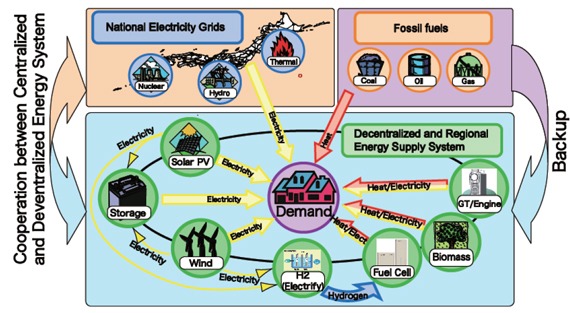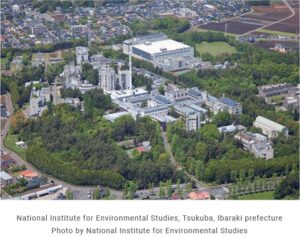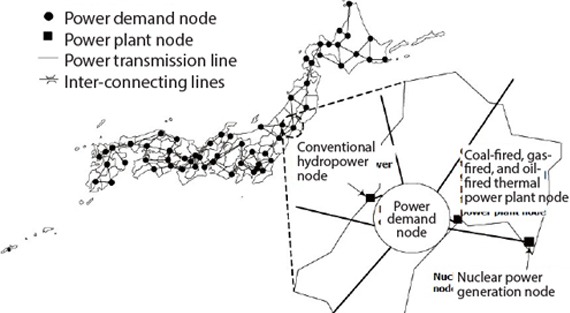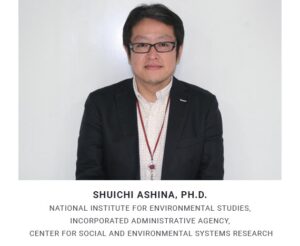“Gurobi can calculate the best answers for complex equations within 2 to 3 hours, and for less-complex cases within just an hour.”
Shuichi Ashina, PhDCenter for Social and Environmental Systems Research, NIES






INDUSTRY: Research, Analytics, Optimization
REGION: Asia
The Center for Social and Environmental Systems Research conducts a variety of modeling research for energy, economy, and technology. These models cover a range of time, space, and scale, and include models related to the power sector, the national energy system, the global energy system, and the uses of renewable energy. There are many current challenges related to energy and technology, and to realize a low-carbon society we must evaluate “the best way to construct a society that significantly reduces CO2 emissions, and is also growing and comfort-able to live in,” and how to bring it about in Asia. In Japan, we have an international commitment to “cut 80% fr om 1990 emission levels by the year 2050”. The final target is equal to rolling back CO2 emissions to 1960 levels. However, it would be very difficult for us to actually go back to the kind of life people lived then, around the time of the first transistors. So, by evaluating many models, we work to realize a society that reduces CO2 emissions, but is also growing and comfortable; building “a vision of a future society that is compatible with today’s society.”

We use Gurobi Optimizer for optimization calculations for all of our models. In particular, we use Gurobi Optimizer to evaluate the best combination of technology and energy sources to bring CO2 emissions under allowable levels, and to analyze the energy sector in Japan. Under the long term global goal of “cutting to 80% of 1990 emission levels by the year 2050”, we evaluate combinations of various scenarios for our global model. For example, we evaluate “what would happen if only the EU took measures on climate change?”, or “what would happen if a global carbon market was established?” For the Japanese power sector study, we evaluate “what would happen if the percentage of nuclear power generation decreases?”, and “how much energy conservation would be needed?” In order to ascertain optimum values, calculations with a huge number of variables and constraint conditions (both are in the millions) are required. The Japanese power sector model divides Japan into 60 areas, and because different climates have different demand characteristics, there are 19 climate groups. Further, time is divided into 1 hour increments, and there are 20 power plant types. The possible number of combinations is enormous. For global models, because there are so many nations, and 600 – 700 technologies, the possible number of combinations is even larger. And these problems all need to be addressed as equations.
Gurobi Optimizer can calculate the best answers for complex equations in the global model within 2 to 3 hours, and for less-complex cases within just an hour. And in the power sector, including renewable energy models, the best answer for complex cases can be ascertained within a day. The solver we used in the past could not even load a model with several million variables (total model size of more than 2GB). Therefore, we used to have to remove some core elements and simplify problems in order to solve them. But, even when a model was simplified, it took about a week before the answer was delivered. Today, thanks to Gurobi Optimizer, a full model can now be easily solved.
I majored in mechanical and systems engineering, and have been involved in my current research since my junior year in college. Since then I’ve been involved in optimization methods, such as finding “the most appropriate combination by looking at technologies and how best to combine them”. In order to find the best combination from the millions of possible combinations, optimization technology is necessary.
Thanks to optimization technology, we can evaluate what types of energy and technology should be combined to minimize costs. When we were considering implementing Gurobi Optimizer, it caught our attention that it can solve large models with absolute accuracy and can deliver the best answer at high speed. With the solver we used to use, if a model was too big, it couldn’t even load it, let alone solve it. So we had to be creative in simplifying the model. With Gurobi Optimizer, we can now accurately calculate large scale models of 5 or 6GB.
In the process of continuing to improve a model, constraint conditions and variables continue to increase. Gurobi Optimizer can calculate very large models fast and accurately, and that was the biggest reason we chose it. Our study doesn’t end with just one calculation, a number of calculations have to be done with different settings and the results compared repeatedly, so it is very important from the standpoint of efficiency that the speed for each calculation is fast. If a single calculation takes 1 week, this means that only 52 calculations can be done in a year.
National Institute for Environmental Studies Web site: https://www.nies.go.jp/

The National Institute for Environmental Studies, Incorporated Administrative Agency, came into existence in 1974 as the National Institute of Environmental Pollution Research. Since then, as the core agency for environmental studies in Japan and abroad and a contributor to policy decisions, it has conducted high-quality environmental studies with long-term emphasis on studies that meet the challenges of environmental systems and technologies planning and implementation. With a sense of our wide-ranging mission, and working together with related agencies and researchers in Japan and abroad, we conduct studies designed to generate the information necessary to address a variety of environmental issues.
The Center for Social and Environmental Systems Research was established to conduct studies that explore the relationship between the environment and human society, with the goal of creating a sustainable society where environment and economy are in harmony. We conduct studies, working together with research centres in Japan and abroad, with the goal of creating this sustainable society, and in particular the planning of environmentally conscious cities. The Center for Global Environmental Research is also a leader in global warming studies and is responsible for the evaluation of counter-measures and the development of comprehensive economic models and strategies. The results of these studies are applied to environmental policies in Japan, as well as IPCC and policies in Asia, in support of a low-carbon society. The Center is also active in international activities, conducting research that investigates “humanity and society” and the relationship between socio-economic activities and environ-mental problems, with the goal of a sustainable society where environment and economy are well balanced.
Fast calculation speed also optimizes the use of time. Since Gurobi Optimizer implementation, results can be acquired in a short time, and study efficiency has been substantially improved.


There are several solvers in the world. The things you may want to do with a solver vary, and there are also budget considerations, so it’s important to choose a good product by considering the long-term perspective. When choosing a solver, if “scalability” is a prime consideration from the start, the results will be better over time. Especially when choosing a solver to solve real problems, it’s important to take this into consideration. The solver may be able to solve smaller problems very well, but problems usually grow larger, and if the problem becomes unsolvable at some point it will be too late to change. So, choosing a good solver can give you peace of mind as models expand. My power sector model is an example. With our previous solver, if I expanded the model even a little, it became unsolvable. So, in order to realize your “dreams and goals”, the choice of a good optimization solver is very important.
GUROBI NEWSLETTER
Latest news and releases
Choose the evaluation license that fits you best, and start working with our Expert Team for technical guidance and support.
Request free trial hours, so you can see how quickly and easily a model can be solved on the cloud.